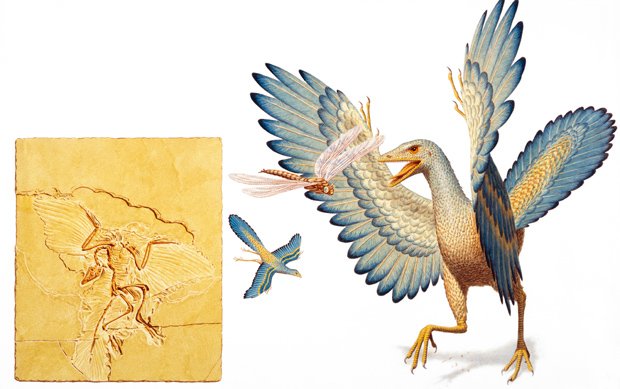Archaeopteryx knocked off evolutionary perch

THE WINGED ARCHAEOPTERYX, long venerated as the forebear of birds, has been knocked off its hallowed perch on the tree of evolution, according to a new study.
A new dinosaur species unearthed in northern China reveals that the iconic 150-million-year-old ‘original bird’ is probably just another dino with feathers, of which there are many known species, the researchers said.
It is hard to imagine a harder fall from evolutionary grace. Since its discovery 150 years ago in Bavaria, most scientists placed Archaeopteryx squarely at the root of the broad group of proto-birds, known as avialae, from which our modern feathered friends have emerged.
The emblematic creature was also held up as a case study – the case study during the late 19th century – of evolutionary transition, to wit, from dinosaur to bird.
Doubts finally put to rest
Over the years, a few scientists have gingerly expressed doubts, pointing to supposedly defining bird-like characteristics – feathers, the wishbone, three-fingered hands – that were also showing up in non-avian dinosaurs. But without hard proof that Archaeopteryx was not really where it belonged on the so-called phylogenetic tree, the presumed progenitor continued to reign over its feathered kingdom.
Enter Xing Xu, a professor at Linyi University in China’s Shandong Province, who is famed for discovering many dinosaur fossils. In the new study, published on Thursday in the journal Nature, Xing and colleagues describe the attributes of a previously unknown dinosaur the fossil of which was found in Liaoning Province, in China’s northeast.
About the size of a chicken and probably weighing less than a kilo, Xiaotingia shared a host of key characteristics with Archaeopteryx but seemed, at the same time, to fall into another group of non-avian dinos called deinonychosauria. A standard computer analysis confirmed as much, but at the same time produced a stunning result: Archaeopteryx had been reclassified into the same group.
“In other words, Archaeopteryx was no longer a bird,” Lawrence Witmer, a professor at Ohio university’s Heritage College of Osteopathic Medicine, said in a commentary, also in Nature.
Smoking gun
Xiaotingia, it turns out, was the smoking gun that sceptical scientists had been looking for. Surprised by their findings, Xing and his team ran the analysis again, but this time without the newly discovered species. Archaeopteryx was restored – in error, they now knew – to its previous perch.
Xing has called for further confirmation, but suggests that his discovery will overturn long-held assumptions about the “avian ancestral condition.”
“Perhaps the time has come to finally accept that Archaeopteryx was just another small, feathered, bird-like theropod fluttering around in the Jurassic,” Lawrence said. One reason it has been so hard for biologists to embrace this idea may have more to do with history than science. The first Archaeopteryx specimen was discovered, with uncanny timing, less than two years after the publication of Charles Darwin’s game-changing Origin of the Species.
Led astray
With an evenly matched blend of avian and reptilian features, it became –
in textbooks and public debate – ‘Exhibit A’, in explaining the
transformative power of natural selection and evolution.
“The familiar fossils have guided almost all scientific thought about the beginnings of birds,” Lawrence said, including himself among those led astray. Its reclassification, he added, is likely to “rock the palaeontological community for years to come.”
Who are the new candidates for king of the roost? No single species is likely to ever gain the stature that Archaeopteryx once had, said Xing. But among the new pretenders, three newly discovered creatures stand out: Epidexipteryx, Jeholornis, and Sapeornis.
RELATED STORIES

